(2804 products available)








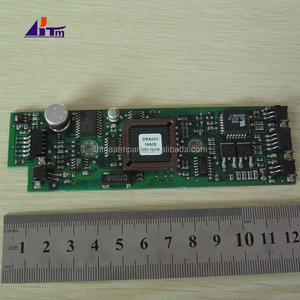
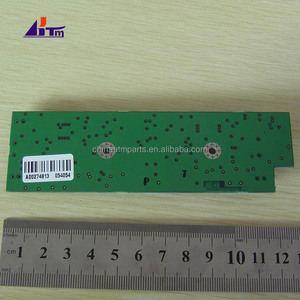































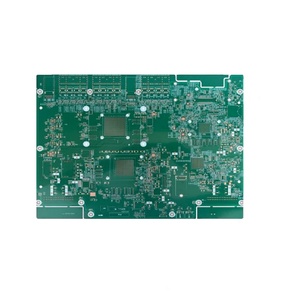







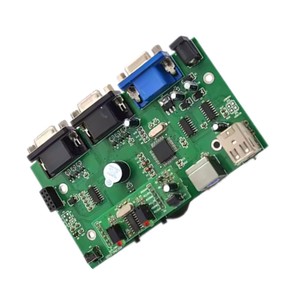
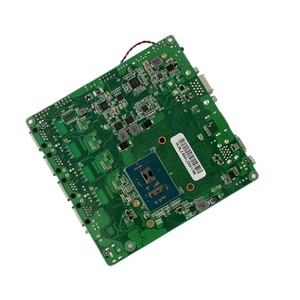
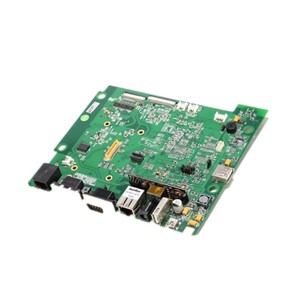
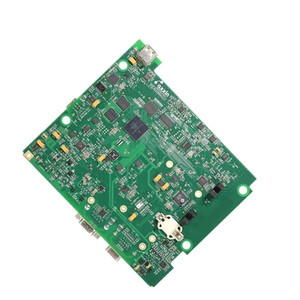
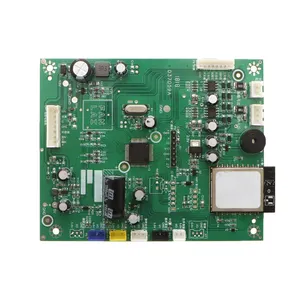













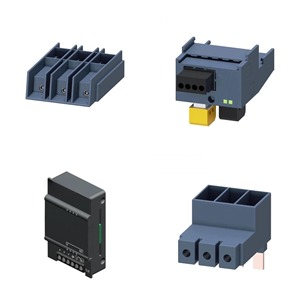





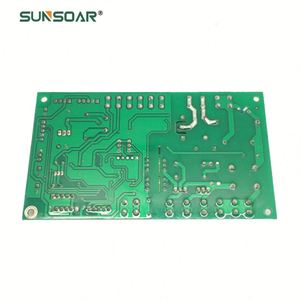






















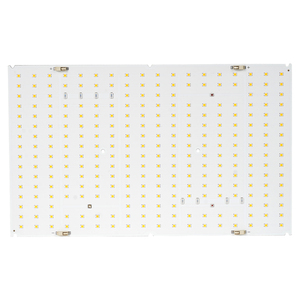








































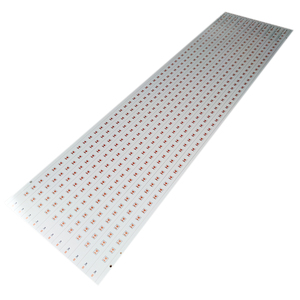















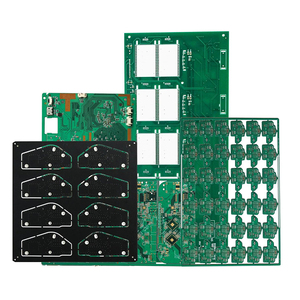


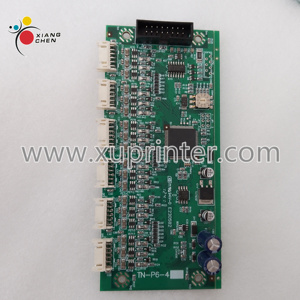




94v0 printed circuit boards come in various types to suit electronics' unique and diverse needs. These types include multilayer, single, and flexible boards, each with its benefits. Below is a detailed list of these various types.
These PCBs are the simplest type and have one conductive copper layer. It contains only one substrate layer with all its components on one side and tracks on the other. Single-sided PCBs are hence cheap and well suited for simple circuits in products such as toasters, radios, and televisions. These boards have a 94v0 designation, which means they can handle high levels of thermal exposure and are not easily inflammable. Thus, even as the single-sided PCB hosts simpler electronic configurations, its sturdiness permits efficient functionality in everyday devices.
As the name suggests, these boards have both sides, wherein components and copper paths are on both sides. Components are thus mounted on either side, and holes allow for connections. Such boards are suited for medium-density circuit designs. Providing more space for connections than single-layered boards, double-sided ones suit devices with more complex wiring, like power supplies and certain lighting systems.
Multilayer boards comprise three or more conductive layers separated by insulating layers. They offer the highest complexity and density. Such boards are useful for advanced electronics, which cannot be provided with enough space for their circuits or wiring. In multilayer boards, the layers of copper are laminated and interconnected through vias. Thanks to the fire resistance of the epoxy, the multilayer PCB is reliable even with increased heat levels and intricate designs. It therefore fits into sophisticated items like laptops, smartphones, and medical machinery.
These boards are made of flexible materials, allowing them to be bent or shaped to fit various designs. Such PCBs are widely applied in devices requiring adaptability, such as wearables, cameras, and certain medical equipment. The flexibility makes such devices have higher space efficiency and better integration. The 94v0 board's rigidity makes it difficult for these boards to sustain bending without failure and at elevated temperatures, hence ideal for such dynamic environments.
Knowing all these variants will help make the right choice depending on the end device and operational requirement.
Having known the various 94v0 PCB types, there are several factors when choosing the right type, which include complexity, layer count, flexing requirement, and the device where each will be applied. Below are some more such factors to consider.
The materials comprising a 94v0 PCB determine its performance and range of application. Copper is commonly used for its conductive layer, with glass-reinforced epoxy as the insulating base layer. However, in other PCBs, other materials such as aluminum, Polyimide, and ceramic are also used. Multilayer PCBs use different thicknesses of copper for conductivity and are efficient at different electronic functionalities. The thermal stability of the underlying material guarantees the safe functioning and general reliability of the device, especially under load conditions.
A 94v0 PCB's thermal efficiency is crucial for complex electronic devices operating under high loads. The epoxy laminate material, which is typically reinforced with glass, has high thermal endurance. Such boards have excellent thermal insulation properties from copper layers. Users should also consider heat sinks or other means to dissipate heat in devices that contain multilayer or flexible PCBs to avoid damage. Adequate thermal management keeps the integrity of the PCB, increases functionality, and makes the product last longer.
Flexing requirements matter most for devices that need a flexible PCB. Such boards can bend and fit complex designs since they're made of flexible materials. They are useful in many applications, ranging from thin smartphones to medical implants. Unlike rigid 94v0 PCBs, which are more inflexible, flexible PCBs make it possible to install electronics in more confined and rounded space configurations without worrying about breakage or circuit failure. Choose a flexible PCB when the end device requires flexibility.
94v0 PCBs come in various layer counts, from single to multilayer, depending on their circuit complexity. Simple devices work well with a single-layer or double-sided PCB. Multilayer PCBs handle complex circuits. Such printed circuit boards support a greater density of components. These layers must be adequately insulated to eliminate short-circuiting. The more layers there are, the harder the PCB is to manufacture and design, yet it must function as expected in devices that need more intricate connections. Selecting the right layer count guarantees the efficiency and effectiveness of the device in which the PCB will be embedded.
These circuit boards have universal uses in various industries, including telecommunications, automotive, and consumer electronics. Here are their uses in some specific spheres.
These PCBs facilitate operational safety and efficiency in modern cars due to the increasing electronic presence. Their heat resilience makes them ideal for critical systems such as engine control, braking systems, and temperature sensors. These boards manage multiple signals and data processing in high-stake environments. In electric vehicles, multilayer PCBs assist more complex circuits to handle greater power. Hence, 94v0 PCBs provide long-term reliability, which is crucial in this industry.
The PCB's ability to resist fire and dielectric dissipation qualifies it for high-performance demands in this sector. These boards handle complex wiring systems in devices like mobile phones and routers. Their multilayer variants are instrumental in improving signal strength and data processing speed. These PCBs ensure smooth connectivity and sophisticated telecom infrastructure functionality through efficient heat dissipation.
These circuit boards are crucial components in many products, from smartphones to laptops and home appliances. Their durability guarantees that devices function efficiently at elevated temperatures. These boards enable different electronic components' dense arrangements in products like TVs. Being easily mass-produced makes these PCBs economically viable for everyday gadgets, offering the desired performance.
They ensure the controls and systems of industrial equipment run reliably. In machinery used for heavy industrial work, such boards can bear much heat and electrical strain. Their multilayer designs fit complex control systems, facilitating operations like managing motors, sensors, and power outputs. These boards hence enhance performance while ensuring safety and effectiveness in industrial settings.
The 94v0 PCB's versatility and robustness make it highly useful in many critical applications. Be it automotive, industrial, or consumer electronics, these PCBs provide the required physical and electrical characteristics of varied electronic components.
The iconic flame-retardant epoxy on 94v0 PCBs has a glass-transition temperature of up to 90. C. These boards are distinguished by their copper layers and glass-reinforced substrate. Here are the specifications and maintenance of these circuit boards.
The key feature that qualifies a 94v0 PCB for inhabiting electronic devices is its high glass transition temperature, Tg, of up to ninety degrees Celsius. The chipboard comprises copper layers for the conductive part, with the substrate as reinforced glass, which enhances strength. The number of layers varies depending on use, from single layers to multilayers. Such printed circuit boards are ideal for radiofrequency and microwave applications due to their low loss of signal. Additional thicknesses of the copper layer determine the conductivity required for the specific application. Circuits are also protected by a solder mask, usually green, which makes for easy identification.
Like all other PCBs, 94v0 boards need care to maintain their functionality. The following practices aid in this maintenance:
Avoid Excessive Heat: The boards can endure high temperatures, but sustained heat affects performance. Maintaining proper ventilation prevents overheating. Using fans or heat sinks for dissipating heat adequately keeps the board cool.
Regular Inspection: For ensuring longevity, checking regularly for visible wear, soldering issues, or component damage helps. Look for cracks in the epoxy or delamination signs. Close inspection aids early detection of problems.
Moisture Control: Although epoxy is moisture-resistant, adverse humidity levels affect performance. Moisture-control techniques ensure that the board is dry and free from condensation. Use silica gel or desiccants inside enclosures.
Protect from Dust and Debris: These elements may cause short-circuits and affect performance. Encasing protects against dust and debris accumulation. Put covers over exposed boards and eliminate debris from the workspace.
A1: 94v0 PCBs are valuable to diverse industries like electronics, automotive, telecom, and aerospace. Their thermal endurance and circuitry complexity suitability make them ideal for various applications. These boards are used in consumer electronics, automotive control systems, telecom infrastructure, and medical devices. The ubiquitous flame retardancy of these boards makes them safe for such critical places.
A2: Yes, they are suitable because of their low signal loss and exceptional electrical insulation properties. They are, therefore, ideal for circuits involving radio frequencies and microwave transmissions.
A3: Epoxy the insulated types that have thermal endurance and chemical resistance are most commonly used. Other materials for multilayer boards include polyimide, which is used in flexible circuits that require bending.
A4: Longevity comes from timely inspections, avoidance of excessive heat, and dust protection. Another way to enhance their life is moisture control. Regular maintenance practices keep the board functioning without failure.
A5: Tg is the glass transition temperature. It refers to the thermal range for the start of epoxy softening. Dk is the dielectric constant, measuring insulating material ability to store electrical charge.